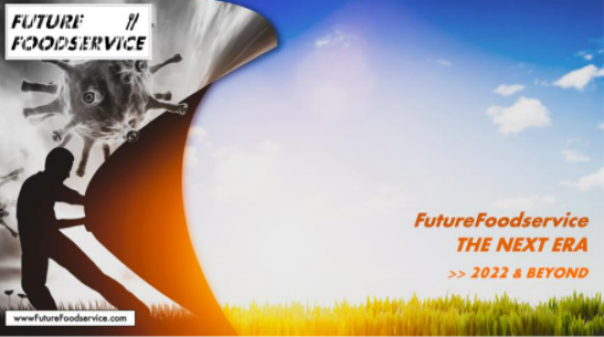
The hospitality and foodservice industry in 2022 is at the start of ‘the next era’, as it recovers from the pandemic and adapts to changing consumer behaviours and market dynamics.
Forecasts for the total UK market in 2022 rise to £95bn, growing 27% over 2021, and nearly achieving the same levels of revenue as 2019, but there are challenges from the rising tax burden and inflationary pressure.
The latest report from FutureFoodservice details forecasts, macro factors and drivers of change, and describes why the market will be different.
Among the most eye-catching are:
• A total market valuation for all hospitality/foodservice (excluding accommodation) for 2022 is forecasted to grow to £95.6bn, increasing substantially from £75bn in 2021, but still lower than the £98bn achieved in 2019
• More apparent polarisation between value-driven social refuelling and the experiential, premiumised dining, with challenges for those stuck in the middle
• A continued growth in fast food brands and increasing Americanisation of the market
• The continuing ‘Polo-Mint’ effect with city centre trade migrating to suburban locations, as working from home continues for a proportion of the week for many office workers, driving growth in neighbourhood cafes, convenience stores, pubs and restaurants
• New Food Models coming to the fore, including dark kitchens, virtual brands, make-aways, and with new CPU’s, food preparation systems, and delivery solutions
The report has been produced by Simon Stenning, founder of FutureFoodservice and a leading forecaster, analyst and commentator on the UK hospitality and foodservice market.
He says: “Whilst the past two years have been incredibly challenging for all in the industry, the Next Era, from this year onwards, sees exciting new concepts growing, an increase in experiential dining providing consumers with persuasive reasons for eating and drinking out of home, and new technology enabling more efficient experiences.
“Value-driven, convenient, fast food solutions will also become more important, meeting new consumer demands, especially from those who are cash-poor and time-poor, but also as the way we live changes, and we try to fit more in.
“There are still challenges at the start of 2022, with the increased tax burden and rising inflation, and the industry has to be careful of dampening nascent consumer demand by pushing more price rises onto them, but if the focus is on delivering exceptional experiences then the best operators will thrive.”
He also identifies the big challenges for operators, including VAT increasing from April, reverting to 20% and reducing net revenues by 7.5 percentage points unless price rises are passed onto consumers.
He says inflation is rising and squeezing consumer discretionary spending, while consumer confidence remains ‘in negative territory’.
He points to an increased tax burden from April with National Insurance rising, at a time when the National Living Wage is also increasing.
And finally, he says with the Labour market continuing to support high levels of employment, this will force employers to make changes to staff scheduling or curtailing trading days or hours.
The ‘Next Era for Foodservice, 2022 to 2025’ report provides detailed forecasts for each sector, with quarterly analysis of the level of turnover to be expected in 2022 and 2023, along with annual forecasts through to 2025.
With 2022 recovering well, subsequent years up to 2025 are forecast to continue growing both in line with economic recovery, but also as consumers continue to eat and drink out of home habitually, with foodservice taking a greater share of stomach from supermarkets, especially through the rising provision and demand for delivered foodservice solutions.
By the end of 2022, total market revenues will have reached 2019 levels, and for 2023, the market will grow to over £101bn, before growing further in 2024 and 2025.